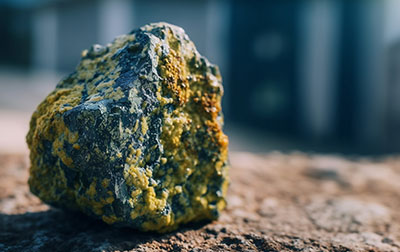Exploring sustainable nuclear energy in Indigenous communities: A balancing act

Context review
SMRs represent a departure not just from the current situation, but from traditional renewable energy. These modular reactors are designed to be smaller, safer, and more flexible—a significant deviation from large-scale nuclear power plants. Their compact size allows for easier deployment in remote regions, making them an attractive option for communities in the north. With the potential to provide reliable electricity, heat, and even desalination, SMRs offer a path toward sustainable development. A cost-effective approach compared to large reactors, they can be deployed in small increments, enabling siting flexibility and a compact footprint, even in challenging environments.
However, the introduction of SMRs is not without controversy. Indigenous communities have a complex relationship with nuclear technology, shaped by historical injustices; irreversible damage to their lands, water sources, and ecosystems; environmental concerns; and the displacement of people and cultural values. It's also noteworthy that while nuclear energy may be championed by some Indigenous peoples as emphasizing a focus on the future and on building a legacy, nuclear power also involves mining the earth for uranium, using water in the reactors, and burying radioactive waste deep in the ground. For many Indigenous people, this is not perceived as “clean”.
Other Indigenous peoples view SMRs as an opportunity for economic growth and energy sovereignty, and this is being marked by significant changes to engagement and inclusion. The Canadian nuclear industry has initiated programs like the Nuclear Ambassadors to foster positive relationships with Indigenous Nations and communities1, and have been warmly welcoming Indigenous Chiefs to important conferences and industry events, ensuring that their voices are heard and their questions are answered.
With this in mind, it’s important to consider the fuller picture of developing new nuclear energy. Not only will it take significant private and public investment, but it also requires leadership, economic buy-in, and economic reconciliation with Indigenous communities2.
Leadership, collaboration, and community engagement
Northern Indigenous communities are intimately connected to their land, water, and wildlife. The environmental impact of SMRs—both during operation and decommissioning—must be carefully assessed to ensure responsible stewardship of natural resources while harnessing nuclear energy. Key considerations include radioactive waste management, water use, and potential habitat disruption.
To begin to address and reconcile these challenges, meaningful engagement is essential. Traditional knowledge, oral histories, and community consultations should be at the forefront of informing SMR projects. Co-development models that empower Indigenous voices and prioritize local needs can lead to more equitable outcomes, including a collaborative approach to environmental assessments. Rigorous assessments with all stakeholders carrying equal weight are crucial to minimize negative effects on ecosystems, wildlife, and nearby communities.
Environmental stewardship is also a widely recognized practice in Indigenous communities, with importance placed on being caretakers of the land. This perspective must be integrated into decision-making processes and given appropriate value to resource management discussions, ensuring that nuclear energy development, operation, and decommissioning doesn’t harm ecosystems or harm future generations’ well-being.
Indigenous knowledge offers a holistic perspective to environmental assessments by complementing scientific data with ecological, cultural, spiritual, and social dimensions. It reflects local expertise and an intimate familiarity with local ecosystems that can inform baseline studies, impact decision-making, and risk assessments by providing a level of observational wisdom that would otherwise remain inaccessible: observations related to seasonal changes, for example, along with migration patterns, habitat use, climate shifts, species behavior, and ecosystem dependencies.
Empowering Indigenous youth with knowledge about SMRs also fosters informed decision-making. Education campaigns, workshops, and skill-building initiatives can bridge gaps and build trust and create a positive ripple effect for future generations. Mentorships, culturally relevant curriculum, and community involvement all help foster a successful educational environment and enable Indigenous youth to understand the benefits, risks, and implications of using this technology. Most importantly, there must be an open, accurate sharing of information and knowledge in order to build trust and elevate understanding.
Economic and environmental reconciliation
The Indigenous history of uranium mining is deeply intertwined with the impact of nuclear energy and the exploitation of natural resources on ancestral lands, and as we explore the potential of SMRs, we must address this historical context and seek reconciliation. While this topic is explored with greater nuance here, it’s important to reiterate why many Indigenous communities have strongly opposed uranium exploration. Not only has the massive mining of uranium led to severe health issues, environmental degradation, contaminated water sources, radiation exposure, and respiratory disease, it also violates core fundamental belief and cultural value that the land is a living entity worthy of rights and respect. Contrary to the concept of terra nullius3 that founded Canada’s colonization, Indigenous elders understand that there are no empty spaces in their land; all spaces are used by an element or an entity4.
This framework sets the stage for an understanding of why many Indigenous communities are concerned about nuclear power and the mining processes associated with it. It’s unreasonable to expect that there will ever be a total agreement, the best place to focus resources is on SMR literacy for the public. By providing legal requirements, clear engagement principles, defined roles and responsibilities, detailed methodology, timeline, and early engagement, nuclear experts can create unbiased and accessible pathways for community engagement framework.
What’s next?
As we navigate the uncharted waters of SMRs in northern Indigenous communities, we must tread carefully. By listening, learning, and co-creating, we can achieve a future where sustainable nuclear energy benefits all—without compromising the legacy of the past.
With much of the conflict centred around how clean SMRs are, it’s important to remember that every form of energy has a cost-benefit ratio that varies by demographic: what’s vital to one group may be trivial to another.
The only way forward is to keep Indigenous and remote communities at the forefront of nuclear discussions and decisions through education and accessible, accurate information on renewable and non-renewable energy production, consumption, costs, subsidies, fuel types, and utility rates. Contact us to find out more about how Hatch is putting Indigenous community engagement at the forefront of our energy projects and how teams can implement nuclear that is clean and accessible.
